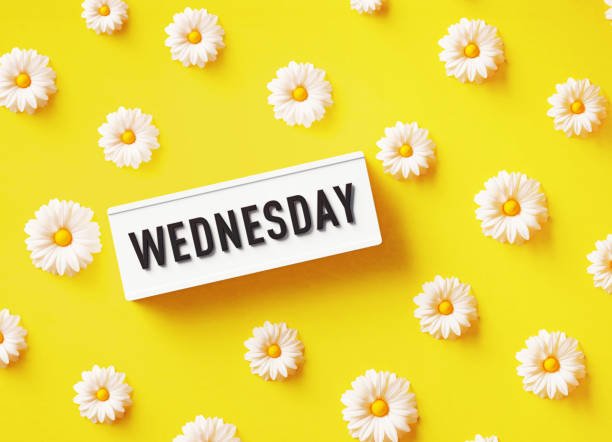Canadian Thanksgiving: The Thanksgiving Day

Canadian Thanksgiving, also known as Thanksgiving Day, is an annual national holiday celebrated on the second Monday of October. It is a day to give thanks for the blessings of the past year, particularly the harvest. While it shares some similarities with the American Thanksgiving, Canadian Thanksgiving has its own unique history and traditions.
The origins of Canadian Thanksgiving can be traced back to the 16th century, when early European settlers, such as the English explorer Martin Frobisher and the French explorer Samuel de Champlain, held feasts of thanksgiving upon arriving in Canada. These early celebrations were often held to mark military victories or the birth of royal children.
Read: Is the Thanksgiving Feast A Celebration Of Gratitude?
History of Canadian Thanksgiving
The first official Canadian Thanksgiving was proclaimed in 1879, to be held on November 6th. However, the date varied over the years, often coinciding with other major events and anniversaries. After World War I, Thanksgiving Day was merged with Armistice Day for a time, but in 1931 the two were made separate holidays. Since 1957, Canadian Thanksgiving has been celebrated on the second Monday in October.
The date change to the second Monday in October was largely a result of the first and second world wars, which are officially remembered each year on November 11, Remembrance Day. This was so that the two holidays would not fall on the same weekend. Most Canadians embraced the change of date to October, since that period better coincides with the actual completion of harvest in much of the country.
Traditions and Celebrations
Canadian Thanksgiving is a time for families to gather together and give thanks for the blessings of the past year. The traditional Thanksgiving meal typically includes turkey, stuffing, mashed potatoes, cranberry sauce, and pumpkin pie. Many Canadians also take advantage of the long weekend to travel and visit family and friends.
Other popular Canadian Thanksgiving traditions include decorating with fall foliage, such as leaves and pumpkins, and participating in community events like harvest festivals and parades. Some families also have their own unique traditions, such as going for a hike or playing outdoor games together.
Controversies and Criticisms
While not as heated as the debate over American Thanksgiving, the Canadian Thanksgiving still has some tensions surrounding it, particularly related to Canada’s complex history around its European settler-colonialism as well as its treatment of Indigenous Peoples. The first recorded major Thanksgiving event in Canada was held in 1799 to celebrate “victory over the enemy”, possibly in reference to the first nation’s having to concede sovereignty during the Pontiac War.
With European settlement beginning to surge around the 1790s, Canada’s future treatment of Indigenous people as well as its links to Thanksgiving would come under controversy. To many Indigenous Canadians, Thanksgiving is not a day of celebration, but rather a reminder of the devastating impact of European colonization on their communities.
How did Canadian Thanksgiving evolve over time
Canadian Thanksgiving has evolved significantly over time, with origins dating back centuries before it became an official national holiday:
- Indigenous Peoples across Canada have long held traditions of giving thanks for a successful harvest, including feasting, prayer, dance and potlatch ceremonies.
- In the 16th century, early European explorers like Martin Frobisher and Samuel de Champlain held feasts of thanksgiving upon arriving in Canada, although the meals were more modest than today’s feasts.
- By the 18th century, Nova Scotia settlers were celebrating Thanksgiving with meals closer to the modern turkey and accompaniments.
- Thanksgiving was officially established as an annual holiday in Canada on November 6, 1879, with the date varying by year.
- After World War I, Thanksgiving was celebrated on the same day as Armistice Day in November, but in 1931 the two became separate holidays.
- In 1957, Parliament fixed Thanksgiving as the second Monday in October, where it remains today. This date was chosen to better align with the completion of the harvest in most of Canada.
- While originally more focused on gratitude for the harvest and God, over time Thanksgiving evolved into a more secular holiday centered on family, food and community.
How did the arrival of American loyalists affect Canadian Thanksgiving traditions
The arrival of American Loyalists after the American Revolution had a significant impact on Canadian Thanksgiving traditions:
- American Loyalists who fled the newly independent United States brought the customs and practices of the American Thanksgiving to Canada, such as the turkey, pumpkin, and squash as part of the meal.
- This helped spread the tradition of a Thanksgiving feast featuring these uniquely North American foods to Nova Scotia and other parts of the country in the 1750s and 1760s.
- Prior to this, Thanksgiving celebrations in Canada were more modest, with early European explorers like Martin Frobisher and Samuel de Champlain holding feasts of thanksgiving that consisted of more basic fare like salt beef, biscuits, mushy peas, and local foods.
- The Loyalists helped make the Thanksgiving meal more similar to the American tradition that had evolved from the Pilgrims’ 1621 celebration in Massachusetts.
- They also brought the customs of the American Thanksgiving celebration with them as they settled across Canada, helping to establish Thanksgiving as an annual tradition in the country.
How does Canadian Thanksgiving differ from American Thanksgiving
Canadian Thanksgiving differs from American Thanksgiving in several key ways:
The timing – Canadian Thanksgiving is celebrated on the second Monday of October, while American Thanksgiving is on the fourth Thursday of November.
The origins – Canadian Thanksgiving has roots dating back to the 16th century celebrations of early European settlers, while American Thanksgiving is more closely tied to the Pilgrims’ harvest feast in 1621.
The focus – Canadian Thanksgiving is more centered around the harvest and giving thanks, while American Thanksgiving has stronger associations with historical events and narratives involving Native Americans.
The scale – Thanksgiving is a much bigger cultural event in the U.S., with traditions like the Macy’s Thanksgiving Day Parade, Black Friday shopping, and football games, which are not as prominent in Canadian celebrations.
The food – While both feature turkey, Canadian Thanksgiving meals may include more regional dishes like tourtière and butter tarts, compared to the sweet potato casseroles and green bean dishes common in American Thanksgiving feasts.
What are some traditional dishes unique to Canadian Thanksgiving
Some traditional dishes unique to Canadian Thanksgiving include:
- Poutine râpée – a boiled potato dumpling stuffed with pork, traditional to the Acadian people of New Brunswick.
- Butter tarts – a classic Canadian dessert with a creamy filling in a pastry shell, popular in Ontario.
- Nanaimo bars – another Canadian staple dessert, made with a wafer crumb base, custard-flavored icing, and topped with chocolate.
- Jigg’s dinner – a boiled Sunday roast, traditional in Newfoundland.
- Maple glazed turkey – turkey basted with sweet maple syrup, a quintessential Canadian twist.
- Bacon and Brussels sprouts – roasted Brussels sprouts with Canadian bacon, which has a tenderer ham-like texture.
- Maple glazed carrots – carrots roasted with maple syrup, a popular side dish.
Conclusion
Canadian Thanksgiving is a unique and important part of the country’s cultural heritage. While it shares some similarities with the American holiday, Canadian Thanksgiving has its own distinct history and traditions. As the country continues to grapple with its complex past, it is important to acknowledge the controversies and criticisms surrounding the holiday, while also celebrating the spirit of gratitude and community that it represents for many Canadians.






